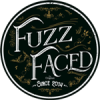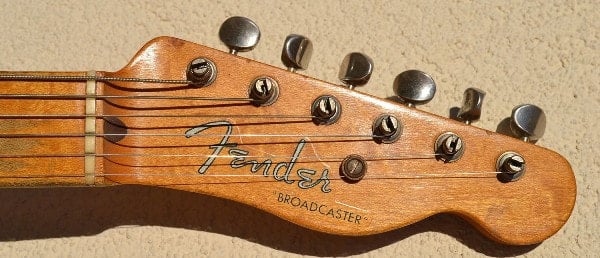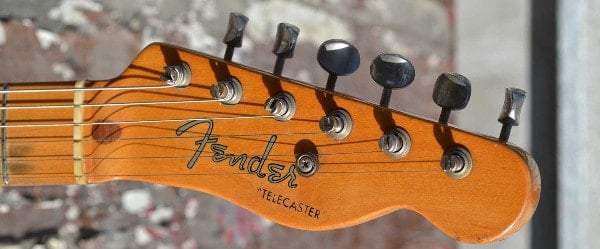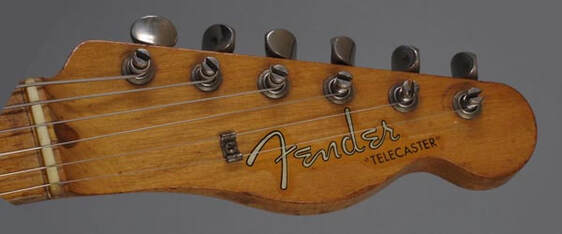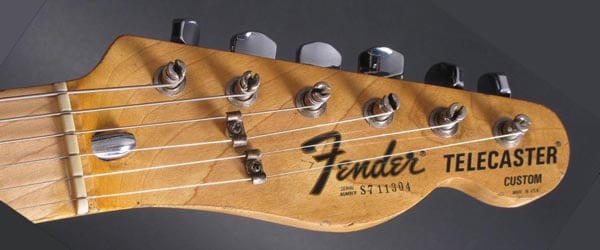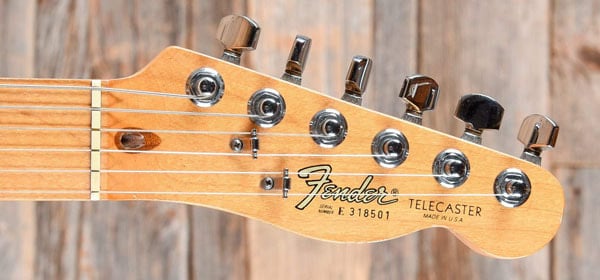- The headstock of the very first 1950 guitars was initially devoid of any string guide (or string retainer), but very soon a round string guide was added to press down the E and B strings. This round guide was screwed on somewhere near the D and G string tuning posts.
Earliest round string guides featured single slot mounting screws, but, beginning in late 1951, Fender gradually replaced them with Phillips head screws.
These early string guides were machined by the Edmiston Company, located very close by to Leo Fender’s original radio shop.
- At the beginning of 1956, Fender switched to a butterfly (or wing) shaped string tree. At first, it kept the same location as the early ‘50s round guide, but it was very soon relocated closer to the nut, next to the A-string tuning post.
- In early 1972, a second butterfly string retainer was installed to hold the G and D strings.
- In mid-83, Elite Telecasters were fitted with the newly designed Ezy-Glider string tree, made of a grooved steel rod to allow for a better string vibration, whilst the Standard Telecaster retained the butterfly string tree. With the advent of the American Standard Series, Fender reverted to only one Ezy-Glider string guide for the E and B strings instead of two.
